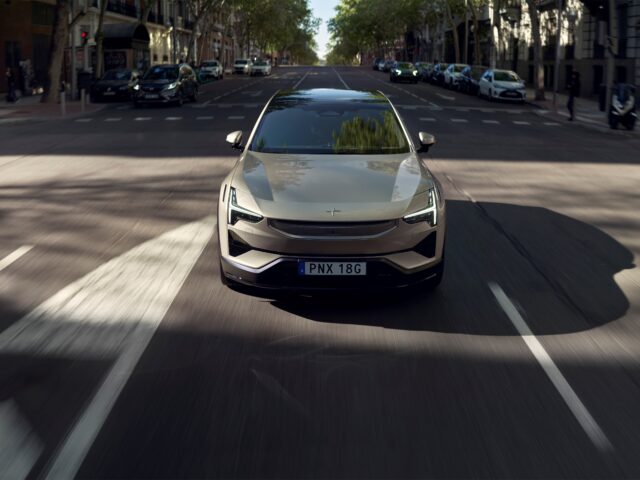It seems like an entirely hypothetical question, but at least the Finish paper industry is convinced it can make EV battery production much more sustainable. Using lignin, a byproduct of its cellulose fiber (like for cloths) and paper pulp industry, Stora Enso has developed a bio-renewable replacement for the graphite carbon used for anodes today.
Lignin makes up between 20% and 30% of trees, acting as a binding agent that gives wood stiffness and prevents rotting. It is one of the biggest renewable sources of carbon anywhere, and Finish Stora Enso is one of the world’s largest private forest owners.
Partnering with Polestar, Northvolt, and Altris
In 2022, Stora Enso partnered with Swedish carmaker Polestar and lithium-ion battery maker Northvolt to develop the’ Lignode-based’ battery alternative. Now, it is also partnering with Altris, a Swedish developer of sodium-ion batteries. Stora Enso says it’s willing to invest over €100 million in a new joint venture to upscale the process to commercial production.
So, what’s the science behind this story? An EV battery today consists of a negative cathode and a positive anode separated by a polymer. When charging, ions move through an electrolyte from the cathode to the anode, where they are ‘stored’ in horizontal layers, like in a car parking building.
It goes the other way around when discharging. In that process, electrons are produced, providing the electricity needed to feed the EV motor.

The cathode consists of metal oxides like lithium iron phosphate (LFP) or lithium nickel manganese cobalt oxide (NMC). At the same time, graphite carbon is mostly used for the anode, which makes up to 30% of the weight of the battery. Graphite can be either mined in open mines from non-renewable natural occurrences—so-called ‘natural graphite’—or created synthetically.
Synthetic graphite is a fossil-based material made by an energy-intensive process from petroleum and coal-derived coke pitches at very high temperatures of up to 3,000 degrees Celcius. This uses a lot of energy, which is often provided by coal-fired power plants in China. So, neither of these methods is sustainable and adds to the carbon footprint of battery production.
Bio-based hard carbon
Stora Enso has found a way to create bio-based ‘hard carbon’ out of lignin, an existing byproduct of cellulose fiber and pulp production. How this ‘Lignode®,’ as it is called, is made – basically also by heating but at far lower temperatures – remains a manufacturing secret. However, Stora Enso produces a lot of lignin itself.
Sunila Mill in Kotka, Finland, has been producing pulp for over 80 years and extracting lignin on an industrial scale since 2001. Its annual production capacity is 50,000 tons, making it the biggest facility in the world.
An obvious benefit of using Lignode® for the anode is that it comes from a renewable source: trees. As it is already a byproduct of the paper industry, there is no need for additional forests to be harvested. The basic stuff is already there.
Another significant benefit, says Stora Enso, is the disordered and open structure of hard carbons in general and of Lignode® in particular, enabling the anode to be charged and discharged more quickly than traditional graphite.

It allows more mobility of the ions in and out, providing faster charging times and better performance at lower temperatures. Stora Enso claims that this will help battery developers create lithium-ion or sodium-ion batteries that can be fully charged in as little as eight minutes.
Fast charging in a few minutes is the Holy Grail of battery development and one of the promises of solid-state battery development. In those batteries, the liquid electrolyte is replaced by a solid material—hence the name—to lead the ions from the cathode to the anode and vice versa.
Lignin-based electrolyte?
Meanwhile, a research team in Italy already published a paper in 2022 about its efforts to make a lignin-based electrolyte, too. A team in Milan developed a gel polymer electrolyte that aided the movement of ions in an experimental potassium battery. That is comparable to a lithium-ion battery, but using potassium ions instead of lithium ions for charge transfer.
However, the commercial viability of all these ideas has yet to be proven, and several technical hurdles have yet to be cleared, like the stability of lignin-based batteries at high loads. To be continued, without a doubt.




Comments
Ready to join the conversation?
You must be an active subscriber to leave a comment.
Subscribe Today